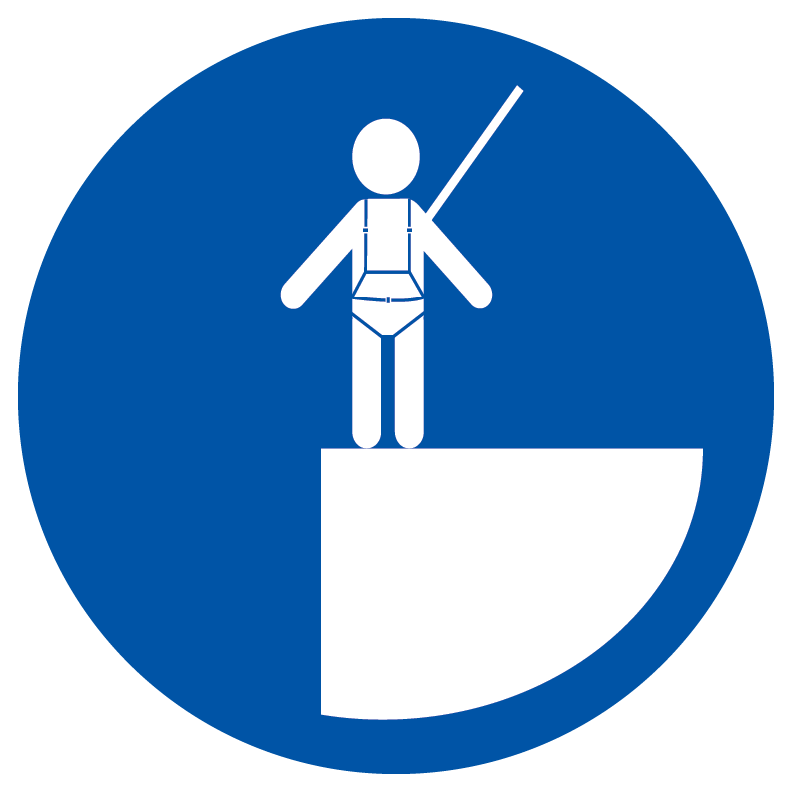Life Saving Rules are essential safety principles that when followed, will protect employees from serious injury or death. These rules were developed around hazards specific to Mauser Packaging Solutions and are focused, clear and simple, actionable, and observable.
FALL PROTECTION
Falls are the leading cause of serious injury and death on the job; which can result from slip, trip or falls on the same level as much as from heights.
You don’t have to be working high above the ground to get seriously injured from a fall. Many slip, trip and fall accidents result in debilitating injuries such as broken hips and serious head trauma. Almost 10% of fatal falls from ladders involved heights less than six feet and close to 30% were only between 6 and 10 feet.

Fall Prevention
The term “Fall Prevention” is most often used to describe a passive fall protection system such as a standard guardrail system comprised of a top rail, mid rail and toe-board.
These systems are considered “passive” because you don’t have to do anything extra to be protected. However, to be safe you must always stay behind this protection and never attempt to climb on or reach over. Alternate fall protection may be needed when sections are removed, such as for material transfer.
Fall Restraint
Fall restraint is a fall protection strategy that prevents workers from reaching and tumbling over an unprotected leading edge. Workers must wear a body harness and connect a fixed-length lanyard to an anchor point. The length of the lanyard must restrict the worker from getting close to an edge.
Personal Fall Arrest
In the fall protection hierarchy, personal fall arrest systems are a strategy of last resort since they are designed to stop a fall already in progress. This is obviously not the best way to prevent an injury, but in some cases may be the only practical solution. Setting up the proper system can require complex calculation to safely limit the fall distance and ensure the system will be able to handle the
Ladder Safety
An average of 2,000 people per day are injured in ladder-related accidents with one of those being a fatal injury. Following safe ladder practices can help you avoid becoming part of this statistic.
Never use a ladder unless you have been properly trained and authorized to do so. You do not need fall protection on most ladders but you should always follow these safety tips:
- Avoid using a ladder if you feel dizzy or tired.
- Check all safety labels. Make sure the ladder is rated for the anticipated use and weight.
- If using a ladder outside, do not use in windy or inclement weather. Watch out for power lines.
- Make certain the ladder is free of grease, oil, mud or other slippery substances. Wear slip resistant shoes.
- Only set a ladder on an even, stable surface.
- Follow the 4 to 1 ladder rule: set the base 1 foot out from the wall for every 4 feet it reaches up.
- Extend straight or extension ladders 3 feet past the roof or platform you are trying to reach.
- Use barricades or a spotter at the base of the ladder.
- Never move a ladder while in use.
- Face the ladder when climbing and always grip the rungs, not the side rails.
- Always keep three points of contact with the ladder.
- Do not stand higher than the step indicated as the highest standing level.
- Don't lean or overreach. Reposition the ladder if needed. Keep your belt buckle between the rails.
- Don't climb while carrying tools. Use a tool belt.
- Never have someone climb up to bring you something. Only one person should be on a ladder at a time.
- Take your time when climbing down so that you don’t miss any steps or rungs.
Our Commitment to Fall Protection:
- I will protect myself and others against a fall when working at any height.
- I will inspect my fall protection equipment before each use and check it regularly.
- I will secure tools and work materials to prevent dropped objects.
- I will always tie off to approved anchor points while outside a protected area.
- I will not ask employees to work at height without sufficient fall protection.

